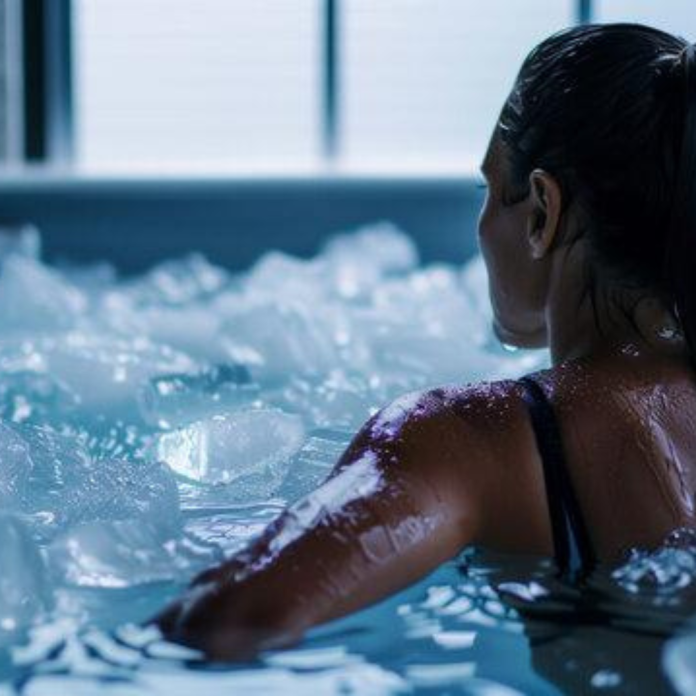When guests arrive at Susan Ringwood’s cozy Scottish cottage, she offers them a unique welcome: an invitation to swim in the frigid North Atlantic Ocean.
And no, she’s not just talking about summer dips. Susan and her husband Gary swim year-round, braving the cold to enjoy the calm, clarity, and quiet that only icy waters can offer.
“To me, it’s about the water. It’s an immersive experience,” she says.
For Ringwood, it’s simply “swimming.” But to wellness influencers and cold therapy enthusiasts, it’s known as cold plunging or winter swimming—touted as a natural cure-all for everything from depression to diabetes.
So, what does science say about cold plunges? Are they really a wellness miracle—or a risky trend that’s being dangerously oversimplified on social media?
The Origins of the Cold Plunge Craze
Cold-water immersion isn’t new. Scandinavians have practiced it for centuries, often pairing icy dips with hot saunas for both physical and spiritual renewal. But globally, the practice took off during the COVID-19 lockdowns in 2020.
“It was something people could do together outside, without close contact,” explains James Mercer, a physiologist from the University of Tromsø in Norway.
Social media soon exploded with testimonials: people claiming better moods, clearer minds, and stronger bodies after a brisk plunge. A global trend was born.
The Cold Shock: Your Body’s Initial Reaction
Jumping into cold water can be a shock—literally. It sets off a powerful physiological response known as “cold shock.”
The moment cold water hits your skin, temperature receptors activate, triggering blood vessels in your arms and legs to constrict. Blood rushes to protect your core. You gasp. Your heart rate surges. Your blood pressure spikes.
“Those first few seconds are the most dangerous,” says Lee Hill, an exercise physiologist and former swim coach. “If you’re unprepared, the shock can overwhelm you.”
François Haman, a physiologist from the University of Ottawa, warns that this extreme shift in temperature can trigger heart attacks or even cardiac arrest.
“It’s like being hit by lightning,” he says. “One of the most intense jolts the body can experience.”
What Happens If You Stay In?
After the initial shock, your body activates something ancient: the mammalian diving reflex—a survival mechanism also seen in marine mammals. Your heart rate drops. Breathing slows. Blood continues to flow to your brain and heart, while being restricted in your limbs.
“It’s the body’s way of conserving oxygen and heat,” says Mercer. “It’s called vasoconstriction—the first line of defense.”
But make no mistake: water pulls heat from your body up to 25 times faster than air. Even in mild water, hypothermia is a risk if you stay too long. How long you can tolerate cold water depends on your body fat, size, and metabolism.
Health Benefits: Are the Claims True?
Fans of cold plunging say it can:
- Improve circulation and blood pressure
- Boost metabolism and insulin sensitivity
- Reduce inflammation and chronic pain
- Strengthen immunity
- Ease arthritis and depression
Science supports some of these claims—but with major caveats.
“Most studies are small, and most participants are young white men,” says Denis Blondin, a thermal physiologist at the University of Sherbrooke. “It’s hard to generalize these results to everyone.”
The studies also vary in water temperature, immersion time, and whether the plunges happen in a lab or the wild—making comparisons difficult.
So while some effects are real, most influencers tend to oversell and overpromise.
Can It Boost Mental Health?
Absolutely—at least anecdotally. Ringwood calls it her personal therapy.
“It’s joyous. It takes all my stresses and puts them in the water,” she says. “I let it wash my worries into the sea.”
Researchers believe this benefit stems from mindfulness. Cold plunging forces you to focus on your breath and body in the moment—no distractions. This awareness can calm the mind much like meditation.
There’s also a chemical explanation. Cold exposure can increase dopamine and norepinephrine, improving mood, focus, and alertness. Cortisol, the stress hormone, also tends to drop after a plunge.
Even a single dip can deliver a natural high.
How to Cold Plunge Safely
- Start Gradually – Don’t leap into icy water if you’re not used to it. Try cool showers or dips in autumn as preparation.
- Know Your Limits – Everyone reacts differently. Listen to your body.
- Bundle Up After – Keep dry clothes, warm towels, and even gloves nearby. Ringwood swears by her neoprene gloves to help with post-swim dexterity.
- Watch for Danger Signs – Mild shivering is normal and even helpful. But if deep, central shivering begins or you stop shivering altogether, it’s a red flag. You’re losing the ability to generate body heat—get warm immediately.
“When you stop shivering, that’s a sign the body’s protective systems are failing,” Hill warns. “That’s when things can go south—fast.”
So, Is It Worth the Hype?
Cold plunging isn’t a miracle cure—but it can be powerful, even life-changing, when done safely and with realistic expectations.
The key? Respect the cold. Understand the risks. Ease into the practice. And don’t believe every social media post you see.
As Ringwood puts it:
“It’s not about being tough. It’s about connecting—with the water, the moment, and yourself.”
source National geographic


